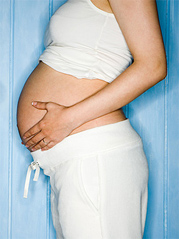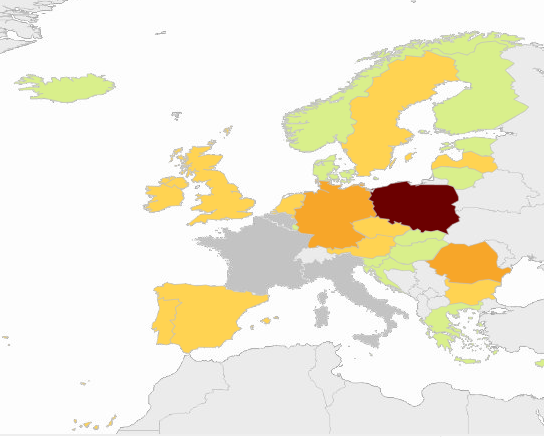 Of the 4,394 rubella cases reported to the European Centre for Disease Prevention and Control (ECDC) in the 12 months leading up to March 2015, almost all of them – 96% – were in Poland.
Of the 4,394 rubella cases reported to the European Centre for Disease Prevention and Control (ECDC) in the 12 months leading up to March 2015, almost all of them – 96% – were in Poland.
At the same time, 23 of the 25 countries that have consistently reported data to the ECDC recorded less than one case per million people.
Of those, 14 countries reported no cases at all. Zero.
Rubella: often mild in children, devastating for babies
Rubella – sometimes called German measles – is usually a mild childhood disease, but it can cause serious birth defects if pregnant women are infected.
Up to 50% of infections may not present symptoms, according to a Fact Sheet published by the European Centre for Disease Prevention and Control (ECDC).
You could have rubella and not even know it.
In addition to increasing the risk of miscarriage or still birth, infection with rubella during early pregnancy can result in Congenital Rubella Syndrome (CRS), in which the normal development of several of the baby’s organs is disrupted.
The result can be anything from deafness and cataracts to heart problems and mental retardation.
Up to 85% of babies born to mothers who had rubella shortly before or in early pregnancy may develop health problems known as congenital rubella syndrome (CRS).
A new report notes that most of these cases were not confirmed through laboratory testing but the numbers nonetheless point to a serious problem.
Young men at risk
The highest number of cases was in children under 10 years of age. However, adolescents and adults were also seriously affected.
As reported previously, in teenagers and adults, most of the cases are in young males.
In the 15-19 year age group the male-female ratio is almost 6:1; while in the 20-24 year group the ratio is 5:1.
What’s going on?
Between 1989 and 2004, only adolescent girls in Poland were vaccinated against rubella.
This has a certain logic but left young men unprotected, meaning the virus continued to spread in the community. Since 2004, a universal two-dose MMR vaccination programme for boys and girls has been in place in Poland.
A European problem

On April 29, 2015, the Americas were declared ‘rubella free’ by the World Health Organisation. This is something Europe hopes to emulate in the near future.
An early pledge to wipe out the disease will miss its 2015 deadline but the WHO Regional Office for Europe is calling for renewed effort to beat rubella and measles in the years ahead.




